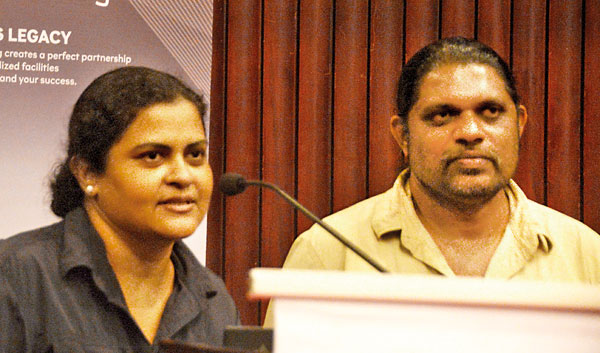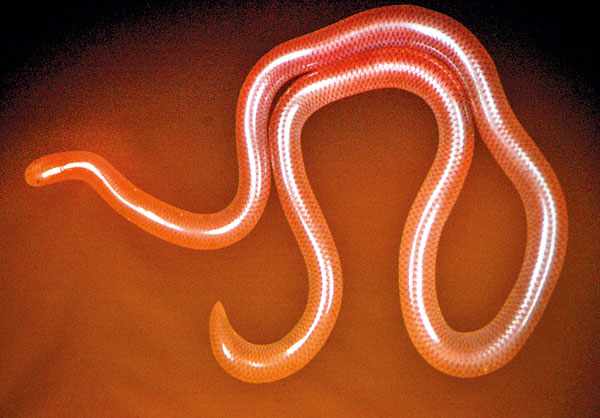News
Herpetologists discuss risks to ‘blind snakes’
View(s):By Kasun Warakapitiya
A lecture unveiling some of the secrets of ‘blind snakes’ was held last week by renowned herpetologist L.J Mendis Wickramasighe and his wife Nethu Wickramasinghe an educationist, scientist, writer, and naturalist with expertise in molecular biology.
It was the monthly lecture hosted by the Wildlife and Nature Protection Society at BMICH. The study involved a team of about 30.
According to them, there was very little information on blind snakes before their study but they were able to distinguish their morphological and genetic differences as well as their habitats.

Nethu Wickramasinghe and L.J Mendis Wickramasinghe delivering the lecture. Pix by Nilan Maligaspe
The study also gave them an understanding on the need for conservation of the habitat of blind snakes. The use of pesticides and insecticides too, pose a threat to blind snakes and their food sources.
Nethu Wickramasighe said that they started research in 2007 and took nearly two decades to build up the story of the snakes.
She said they collected samples, studied the morphology and did genetic research on the blind snakes and gathered more data. A new species of blind snake was identified.
However, Mr. Wickramasinghe said there is a misconception that the blind snakes are blind, but they have small eyes covered by a scale.
“We researched for around 25 years and engaged in sampling 35,000 places. We identified places where we could find blind snakes, where blind snakes were not found. There were unidentified blind snakes even in Colombo,’’ he said.

Mrs. Wickramasinghe said there are about 4,000 snakes in the world and that 1/8 of the entire snake species are scolecophidia (blind snakes or thread snakes). Unlike larger snakes, the small blind snakes who feed on termites and small insects cannot dislocate their jaws.
Most blind snakes found in
Sri Lanka are about six to 10 centimetres long. Researchers found that those found in dry zones are larger than those in the wet zone.
Mrs. Wickramasinghe added that the blind snakes are found everywhere globally in many different habitats except in the ice caps.
She said that Sri Lanka is home to two genera of blind snakes which are typhlopidae and gerrhopilidae.
Ten species of blind snake are known, of which eight belong to the Indotyphlops genus (of which eight species are endemic to Sri Lanka) while the other two species belonged to Gerrhopilus. Both those species are endemic to Sri Lanka.
They believe there could be more species of blind snake and they had newly identified another Indotyphlops genus snake which they named Indotypholops combank. This increases the known number of blind snakes to 11.
She explained that eyes are visible in Indotyphlops genus species, while there are no such signs in the Gerrhopilus genus snakes. Both species have different rostral scales.
The best way to say that you found the home of your dreams is by finding it on Hitad.lk. We have listings for apartments for sale or rent in Sri Lanka, no matter what locale you're looking for! Whether you live in Colombo, Galle, Kandy, Matara, Jaffna and more - we've got them all!

